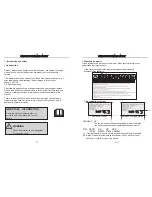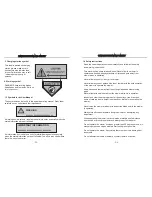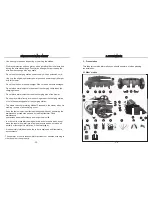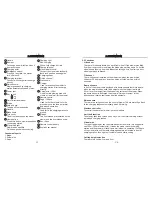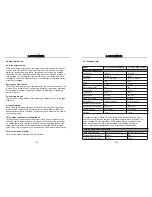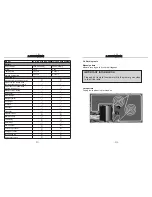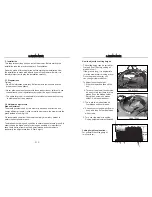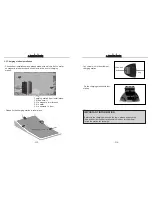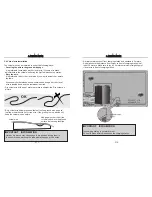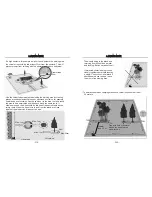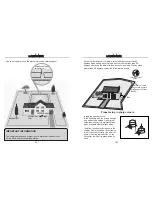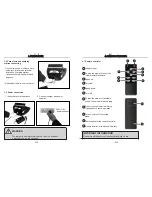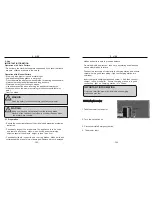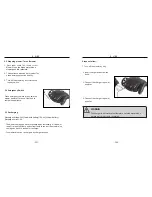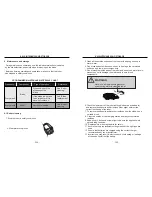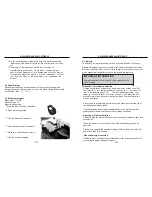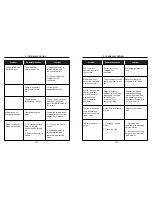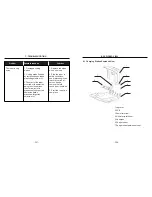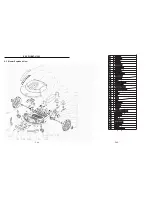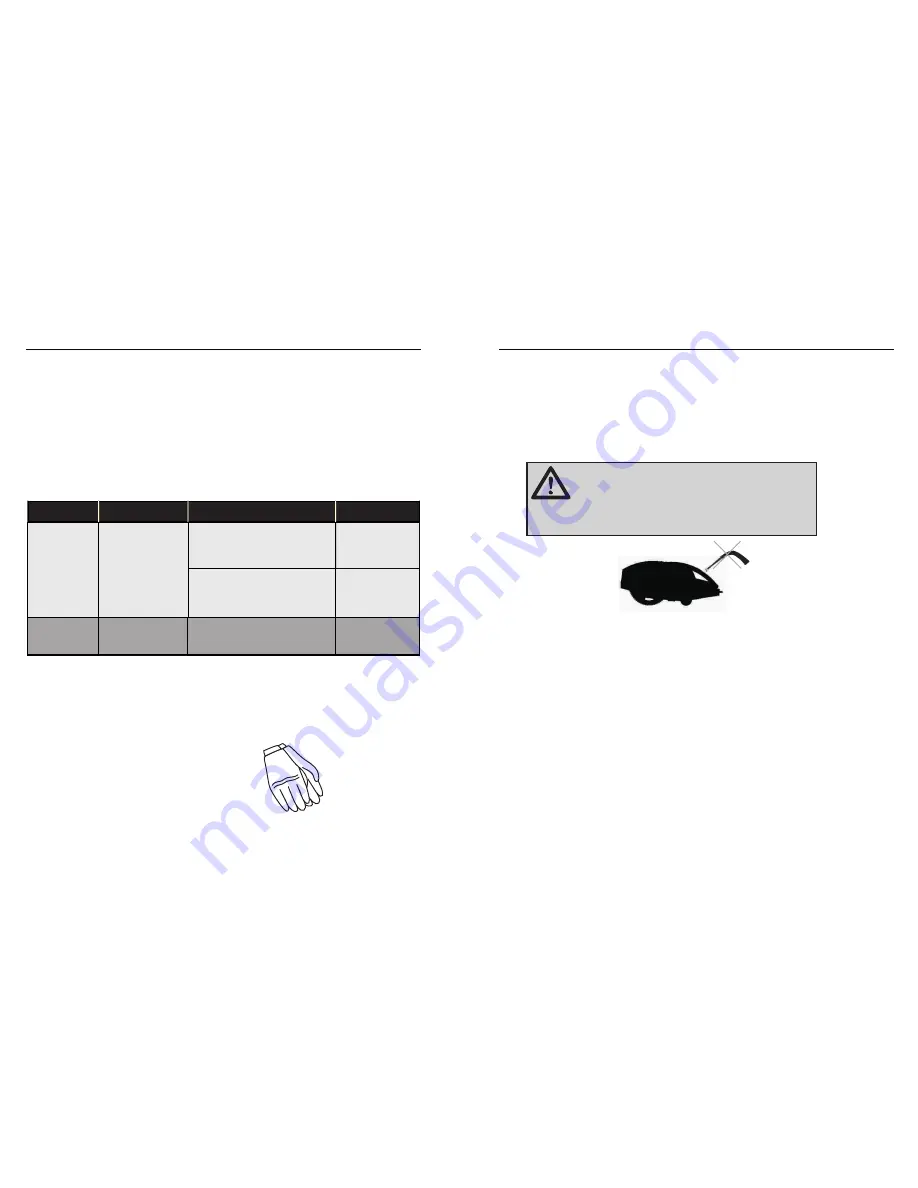
-
P29
-
6
.
Maintenance and storage
6. MAINTENANCE AND STORAGE
- During maintenance operations, use the individual protections indicated
by the Manufacturer , especially when intervening on the blade.
- Before performing maintenance operations, make sure that the robot
has stopped in safety conditions.
PROGRAMMED MAINTENANCE INTERVALS CHART
See “Robot
cleaning”
See “Blade
replacement”
Robot
Carry out cleaning
See “Robot
cleaning”
6.1 Robot cleaning
1.Stop the robot in safety conditions.
2. Wear protective gloves.
Frequency
Component
Type of operation
Reference
Every week
Every month
Blade
Clean and check the
efficiency of the
blade
If the blade is bent due
to an impact or if it is
worn-out, replace it.
-
P30
-
6. MAINTENANCE AND STORAGE
7. To remove the deposits and/or other residues from the blade, use a
suitable brush.
8. Clean the outside of the charging station from any accumulated
residues.
9. Keep all nuts, bolts and screws tight to be sure the appliance is in
safe working condition.
10. Replace worn or damaged parts for safety.
11. Ensure that only replacement cutting means of the right type are
used.
12. Ensure that batteries are charged using the correct charger
recommended by the manufacturer.
13.Incorrect use may result in electric shock, overheating or leakage
of corrosive liquid from the battery.
3.Clean all the outside surfaces of the robot with a spong soaked
in
warm
water
.
4.Do not use solvents or benzene so not to
damage
the
varnished
surfaces
and
the
plastic components.
5.Do not wash the inside parts of the robot and do not use water jets in
pressure so not to damage the electric and the electronic
components.
6.Check the lower part of the robot (cutting blade area and wheels)
and remove the deposits and/or residues that might obstruct the
correct functioning of the robot.
WARNING
Never use a high-pressure washer or
even running water to clean the robot.
Summary of Contents for TC-G158 with lead-acid
Page 1: ...ROHS ...

